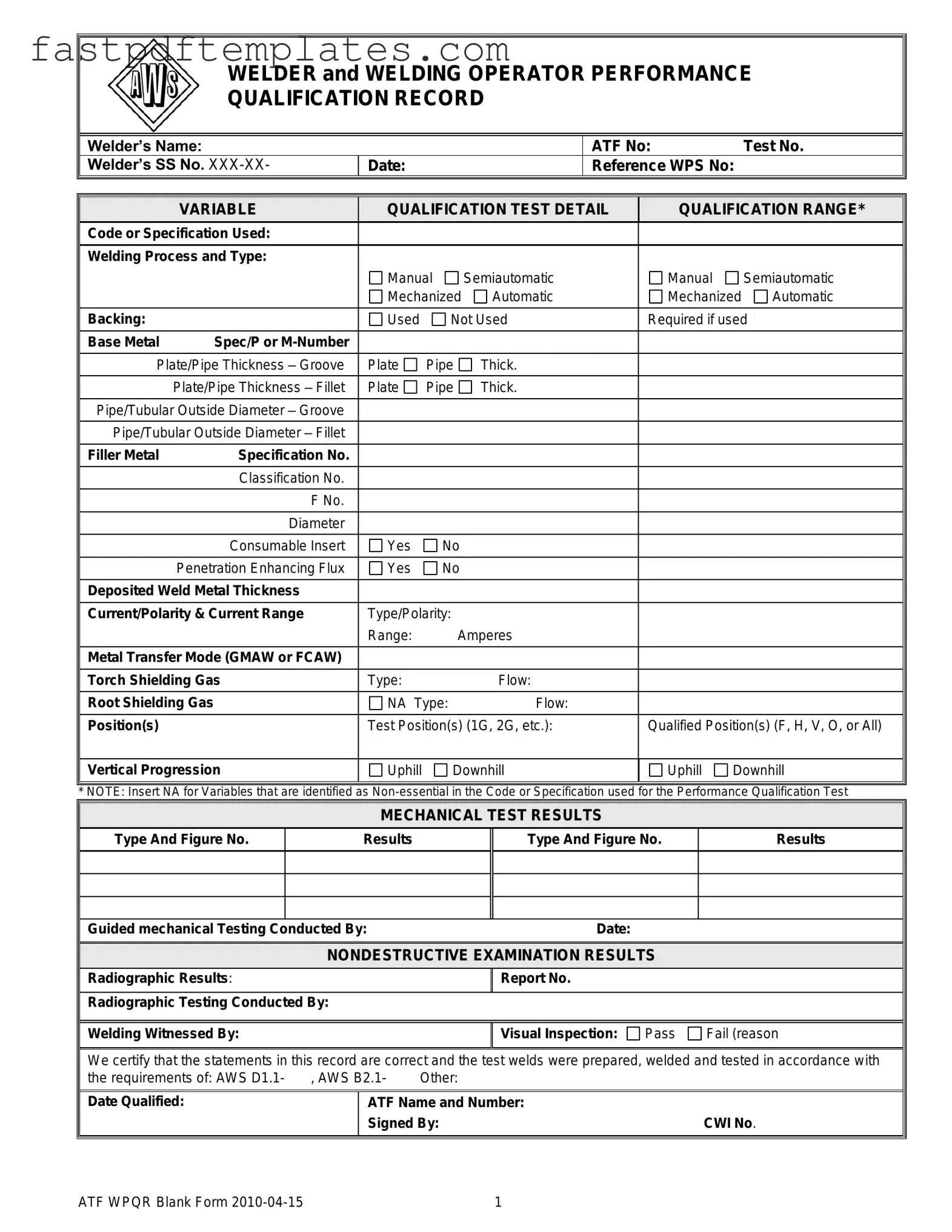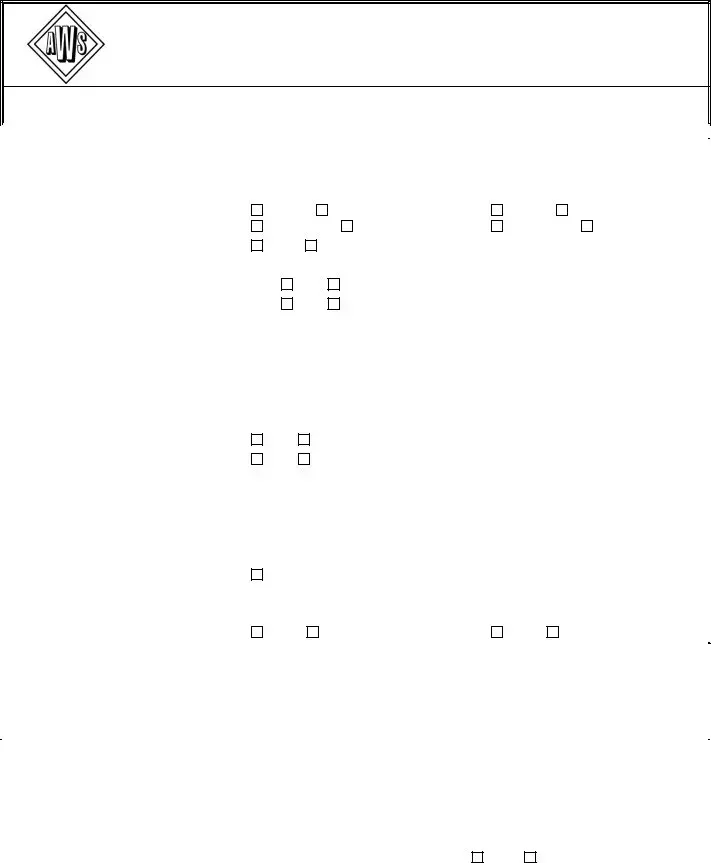The Welder Performance Qualification Record (WPQR) is similar to the Welding Procedure Specification (WPS). The WPS outlines the specific procedures and parameters that a welder must follow during the welding process. It includes details such as the type of welding process, base materials, filler metals, and positions. Both documents ensure that the welding performed meets industry standards and specifications. While the WPQR verifies the individual welder's skills and qualifications, the WPS serves as a guideline for the welding procedure itself.
Another document comparable to the WPQR is the Procedure Qualification Record (PQR). The PQR demonstrates that a specific welding procedure can produce welds that meet the required mechanical properties. It includes results from mechanical tests and non-destructive examinations, similar to the WPQR. Both documents are essential in the welding industry, as they provide evidence of compliance with applicable codes and standards. The PQR focuses on the welding process, while the WPQR emphasizes the qualifications of the individual welder.
The Welder Certification Record (WCR) is also similar to the WPQR. The WCR serves to document the qualifications of a welder, confirming that they have passed the necessary tests to perform specific types of welding. It includes the welder's identification, test results, and the certification body. While the WPQR focuses on the performance qualifications of a welder for a particular project, the WCR is often used for broader certification purposes, ensuring that the welder is qualified to work in various environments and applications.
Finally, the Welding Inspection Report (WIR) shares similarities with the WPQR. The WIR provides a detailed account of the inspection results for welded joints, including visual inspections and any non-destructive testing conducted. Both documents are critical in maintaining quality control in welding operations. The WPQR certifies the welder's qualifications, while the WIR ensures that the completed welds meet the required standards and specifications. Together, they contribute to the overall integrity and safety of welding projects.

